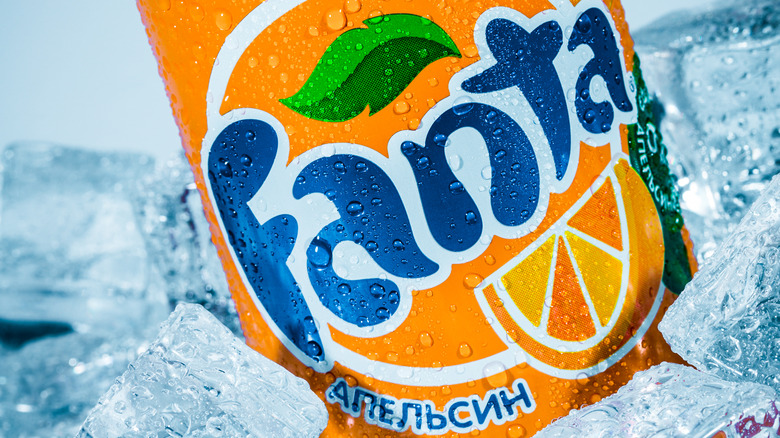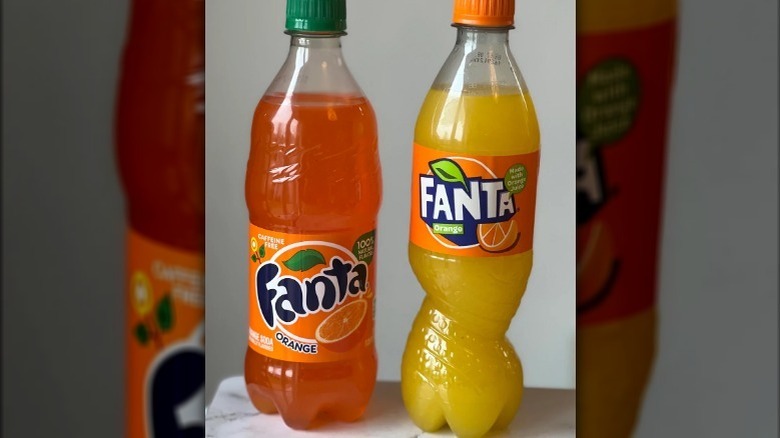Why Fanta In The US Tastes So Different From Its Overseas Counterpart
If you're a soda fan who has vacationed overseas, then you might have noticed that Fanta is completely different outside of the U.S. in both taste and color. Orange-flavored Fanta in Europe is much lighter in color — skewing more yellow instead of the bright orange hue that it has in the States. As for the taste, American Fanta is noticeably sweeter. As it turns out, these differences are a result of the ingredient list for Fanta being quite different in the U.S. than it is in European countries.
Fanta in the U.K., for example, contains actual juice — which explains why it looks closer to genuine orange juice. In contrast, American Fanta contains high-fructose corn syrup instead of pure sugar and does not contain any real juice. Additionally, Fanta in the U.S. has a sweeter taste because it contains 73 grams of sugar per bottle versus only 22.5 grams in U.K. Fanta. Other European countries also differ in ingredients. For example, Italian Fanta has less sugar than the U.S. version and does contain orange juice from concentrate, but it still contains more than double the sugar of the U.K. version at 59 grams. As for why the ingredient list differs, it mostly comes down to differences in regulation per country?
Europe has stricter regulations on certain ingredients
Certain ingredients allowed in the U.S. are banned in Europe, while other ingredients aren't outright prohibited but have stricter regulations in Europe. This includes synthetic food dyes like Yellow No. 6, and Red No. 40. American Fanta contains both Yellow 6 and Red 40.
These dyes are less common in Europe because, in order to use them, the product must include a warning on the label about its potentially harmful effects on the attention and focus of children. After California's Office of Environmental Health Hazard Assessment conducted an extensive report on the subject, the OEHHA Director Dr. Lauren Zeise concluded, "Evidence shows that synthetic food dyes are associated with adverse neurobehavioral outcomes in some children." The food dyes present in American Fanta also explain why there is a lack of real orange juice — the dyes are used to achieve its orange color (a mix of yellow and red), rather than the natural color found in U.K. Fanta.
Additionally, high-fructose corn syrup has a production quota in Europe, which limits its usage, though it's worth noting that this quota is not due to health concerns over the product. Despite being widely utilized as a less expensive alternative to real sugar in the U.S., high-fructose corn syrup is even sweeter than sugar, so the taste is not hampered.

